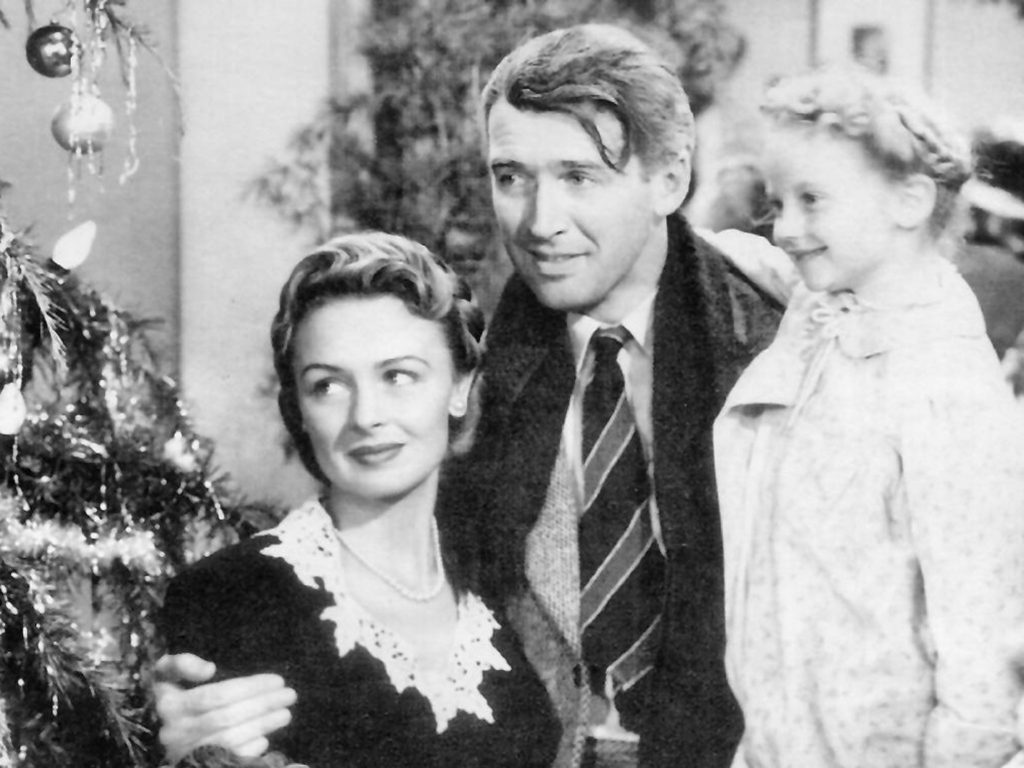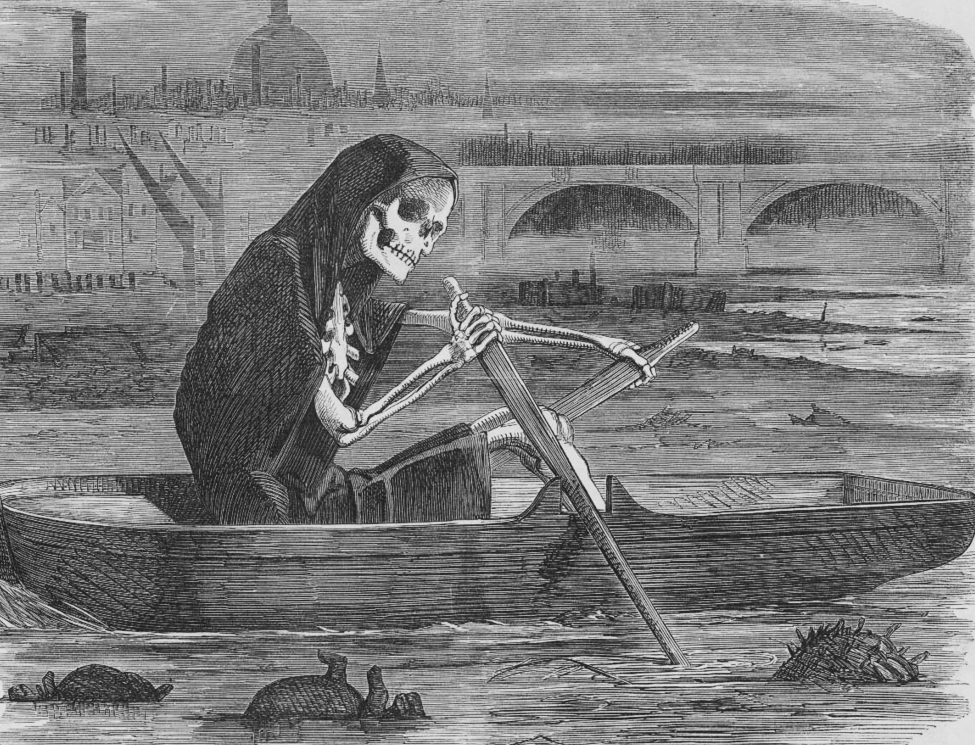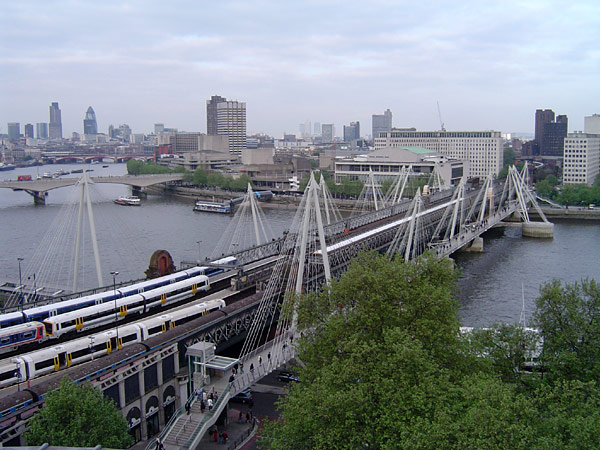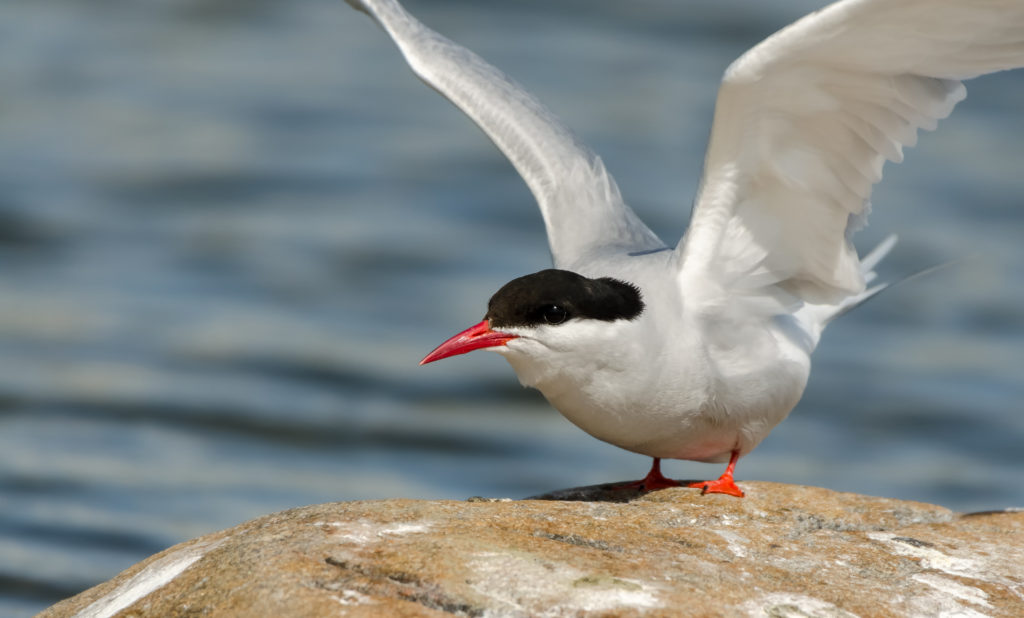Apparently everyone related to conservation took the day off on December 20. Throughout history,there were no conservation-related births, events, tragedies, new laws—nothing. I guess they needed a day to get ready for the holidays. Now that might be what an average researcher might conclude, but not me. Dig a little deeper and you’ll find out that one of America’s greatest films was released on this date—It’s A Wonderful Life!
The film came out on December 20, 1946. It was directed by Frank Capra and starred Jimmy Stewart as George Bailey, a small-town banker, and Donna Reed as his wife, Mary. After some money goes missing and the bank is on the cusp of default, George is so distraught that he contemplates suicide on Christmas Eve. An angel (played by Henry Travers) appears to George and shows him all the wonderful deeds George has done over the years, improving the lives of countless of his neighbors. George draws back from the bridge railing,the money is found, and all is well for Christmas.

While the film was originally a flop at the box office, the years have been kind. It’s A Wonderful Life is now considered a classic of American films, rating among the top of the American Film Institutes’s listings, and it is shown more or less continuously on cable television from Thanksgiving through New Year’s Day.
The movie reminds me of why I am an optimist—an optimist in general and an environmental optimist specifically. We might despair over some environmental loss in the news—an oil spill, reversal of pollution regulations, the listing of a new endangered species—just like George Bailey. But, also like George Bailey, if we look a little deeper and broader, we can see an amazing and wonderful world behind the headlines.
Go back a century to the environmental conditions around the world at the height of the industrial revolution. In big cities,the air was deadly, filled with smoke, dust, soot and pathogens. The water was putrid, choked with household and industrial waste. Infectious diseases ran rampant, fueled by lack of sanitation. Wildlife species were hunted to extinction or near extinction.

Then a new idea began to emerge: a healthy life requires a healthy environment. The world started passing laws to protect the air, water and nature. Infrastructure got built to supply clean water and wash away wastes, to filter particulates out of the air, to regulate the taking of fish and wildlife. People like John Muir, Aldo Leopold, Ding Darling, Rachel Carson—the George Baileys of the conservation movement—picked up the mantle for protecting our resources.
In 1981, I wrote a paper for the American Biology Teacher called “The Case for Environmental Moderation (or why people who live in recycled bottles shouldn’t throw stones).” In that paper, I argued the following:
“A friend once told me that where the environment was concerned, one could either be part of the problem or part of the solution. Nonsense. No one is totally devoted to preserving the environment.To paraphrase Descartes, ‘I am, therefore I pollute.’ The alternative to polluting the environment is to stop living; and then, as every Agatha Christie fan knows, someone still must dispose of the corpse. In practice, we all compromise environmental quality for the benefit of other desires—for wealth and convenience usually, but for other reasons as well, including the relief of human misery.”
Now, 41 years later, I am even more convinced that I am correct. We could site many instances where things continue to improve, and in the references I list several. The giant panda was recently upgraded by IUCN from endangered to vulnerable status, because of the conservation actions of the Chinese people. The world continues to add more lands to protected status, especially today in marine environments. We continue to improve the nutrition of the world’s poor, adequately feeding two billion more people every day than we did two decades ago.
Others also seem to be taking another look at our environment, replacing the characteristic pessimism with a more useful optimism. Technical improvements in almost every exploitative activity—please understand that exploitation of nature is necessary for human survival—is getting more efficient and effective, from agriculture to transportation to energy production and use.

Along with technical improvements comes recognition that the earth is today a combination of natural and human-based processes. Rebecca Tuhus-Dubrow wrote in 2015 that the ecological tenet “everything is connected to everything else” is usually thought of as pessimistic—mess with one part of the environment and the other parts go sour as well. But she noted that there is another interpretation, once you get past the idea that anything human is inherently evil:
“But the corollary is the possibility of virtuous circles. Specifically, various kinds of ‘regenerative’ agriculture can purportedly sequester carbon, make land more resistant to both drought and flood, and render soil much more conducive to growing nutritious plants. The notion that ‘everything is connected’ becomes a source of optimism.”
Tuhus-Dubrow also quoted Laura Martin, a doctoral student at Cornell, who asks us to replace the metaphor of the ecological footprint with a new one—the ecological handprint. “A footprint is a mark one never meant to leave. A handprint, as opposed to a footprint, is deliberate, skilled and artful. It evokes human agency and the human ability to shape the world by choosing among many possible natures.”
I like that metaphor. By putting our hands on the earth and shaping it with care, respect and love, we can nurture a better, fairer, more sustainable world. As long as we keep Gro Harlem Brundtland’s definition of sustainability in mind—live today so future generations can live as they wish—my optimism stands solid. And if you’d like to read about some folks who made a very positive impact on our world and its environment, read my book, Nature’s Allies–Eight Conservationists Who Changed Our World.
George Bailey said “It’s a Wonderful Life.” I say “It’s a Wonderful World,” on December 20 and every day.
References:
Internet Movie Database. It’s a Wonderful Life(1946). https://www.imdb.com/title/tt0038650/. Accessed December 12, 2018.
Nielsen, Larry A. 1981. The Case for Environmental Moderation (or why people who live in recycled bottles shouldn’t throw stones). The American Biology Teacher 43(4):208-210, 224). Available at: https://vtechworks.lib.vt.edu/bitstream/handle/10919/25808/Case.pdf?sequence=1&isAllowed=y. Accessed December 12, 2018.
Perrin, Sam. The Case for Environmental Optimism. Ecology for the Masses, May 28, 2018. Available at: https://ecologyforthemasses.com/2018/05/28/the-case-for-environmental-optimism/. Accessed December 12, 2018.
Skorton, David J. 2017. The Argument for Environmental Optimism: Opinion by Smithsonian Secretary David J. Skorton. Smithsonian Insider, April 2017. Available at: https://insider.si.edu/2017/04/argument-environmental-optimism-opinion-smithsonian-secretary-david-j-skorton/. Accessed December 12, 2018.
Tuhus-Dubrow, Rebecca. 2015. The Eco-Optimists. Dissent Magazine, Winter 2015. Available at: https://www.dissentmagazine.org/article/the-eco-optimists. Accessed December 12, 2018.

